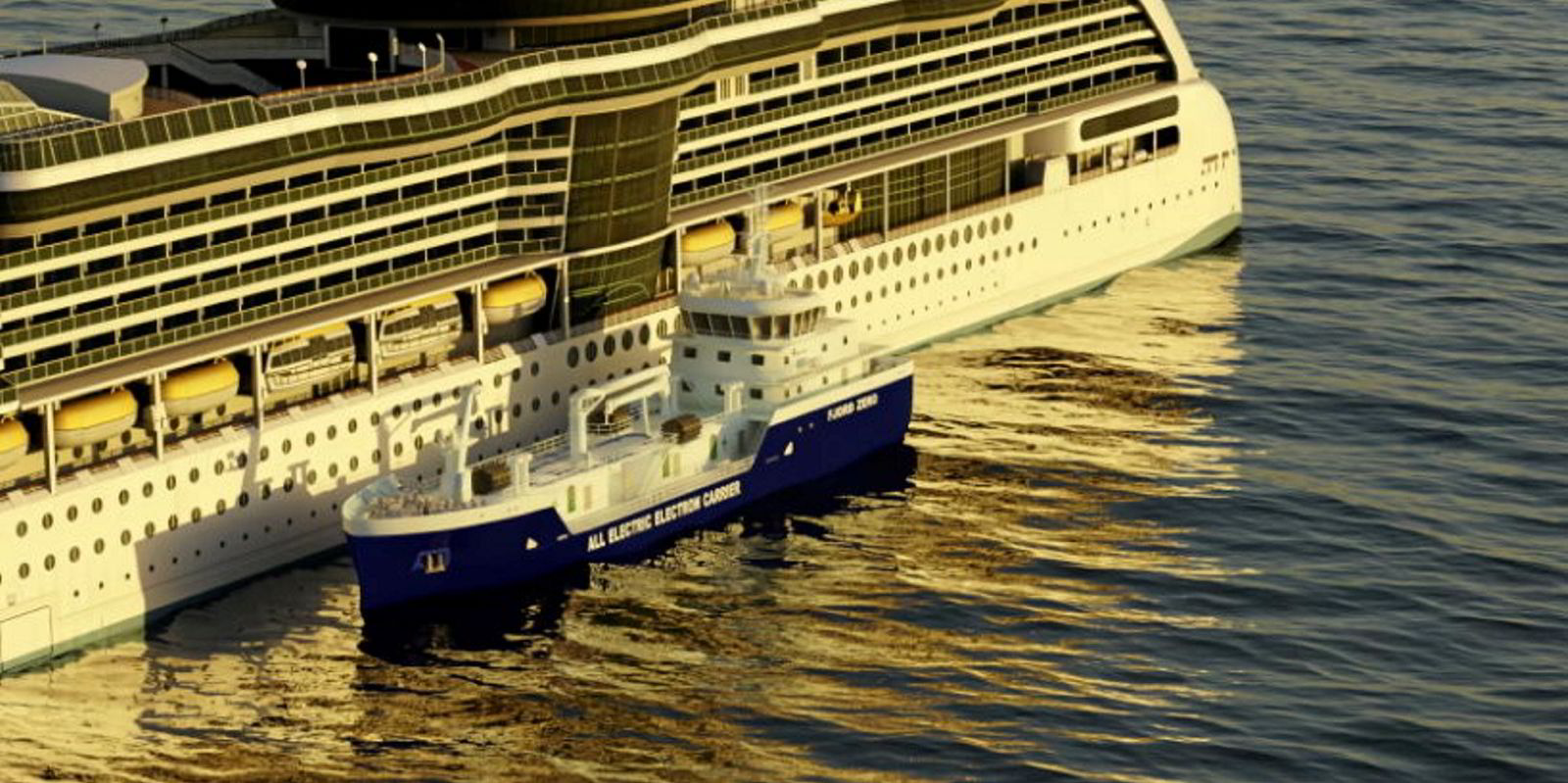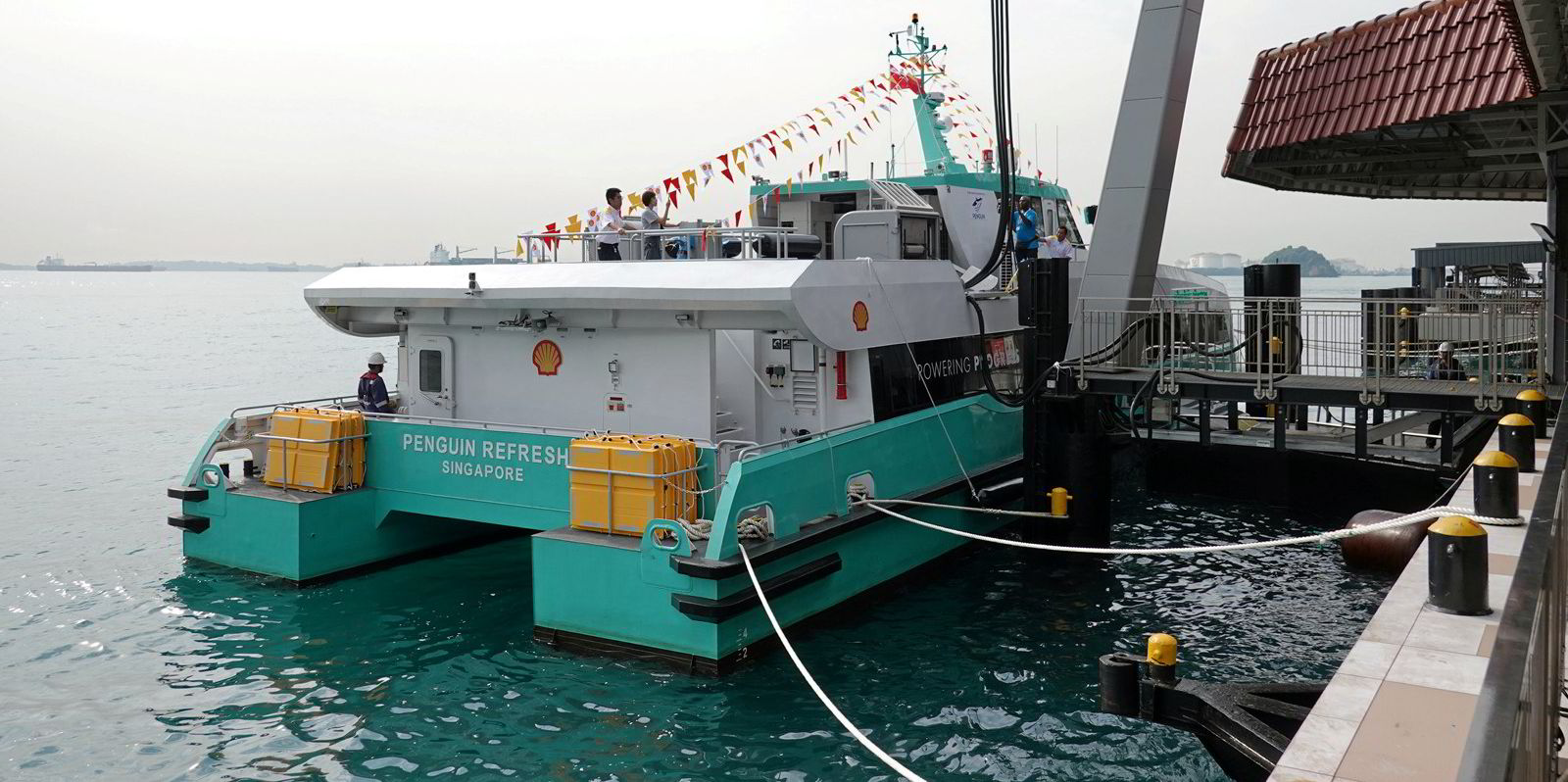Sweden’s SeaFjord Energy has developed the world’s first “e-bunker” vessel, delivering electricity to ships in port.
The ground-breaking design creates the opportunity for the industry at sea to become completely climate-neutral, the company said.
The e-bunker ship comes equipped with a large battery pack to supply green electricity.
“It’s often difficult for large vessels to connect to the electricity grids in ports where infrastructure for shore power is missing,” SeaFjord said.
The company worked with designer FKAB to find a solution to this.
The vessel can be charged at beneficial times or locations and can be used as a back-up resource in an emergency or in crisis situations.
The company has not revealed how far along it is in terms of going out to shipyards to build the unit.
Chief operating officer Elias Magnusson told TradeWinds: “We are excited about the positive impact our vessel can have on reducing carbon footprints and enabling vessels to operate emission-free to a greater extent.”
“Currently, we are engaged in discussions and as a result, we are unable to disclose any specific details about orders or shipyards involved at this moment,” he added.
The e-bunker vessel is designed to be able to deliver an output of up to 50 MW, and a normal charge takes about 60 minutes.
The amount of energy to be delivered is sufficient for a ferry to sail from the south of Sweden to the north of Germany.
“This creates completely new opportunities for the tourism industry as well. The fact that the e-bunker vessel offers fast charging at sea enables ships to travel longer distances without unnecessary stops in ports, or long breaks for charging. This means that passengers are able to travel both sustainably and comfortably,” the company said.
The ship can be charged with energy from a shore connection or directly from a wind farm.
It will then recharge battery packs on board other vessels, or supply entire ships without battery packs.
Chief executive Andreas Magusson said: “We are proud to be pioneers in the development of this type of vessel and are looking forward to collaborating with our partners and stakeholders to promote a more sustainable maritime sector.”





